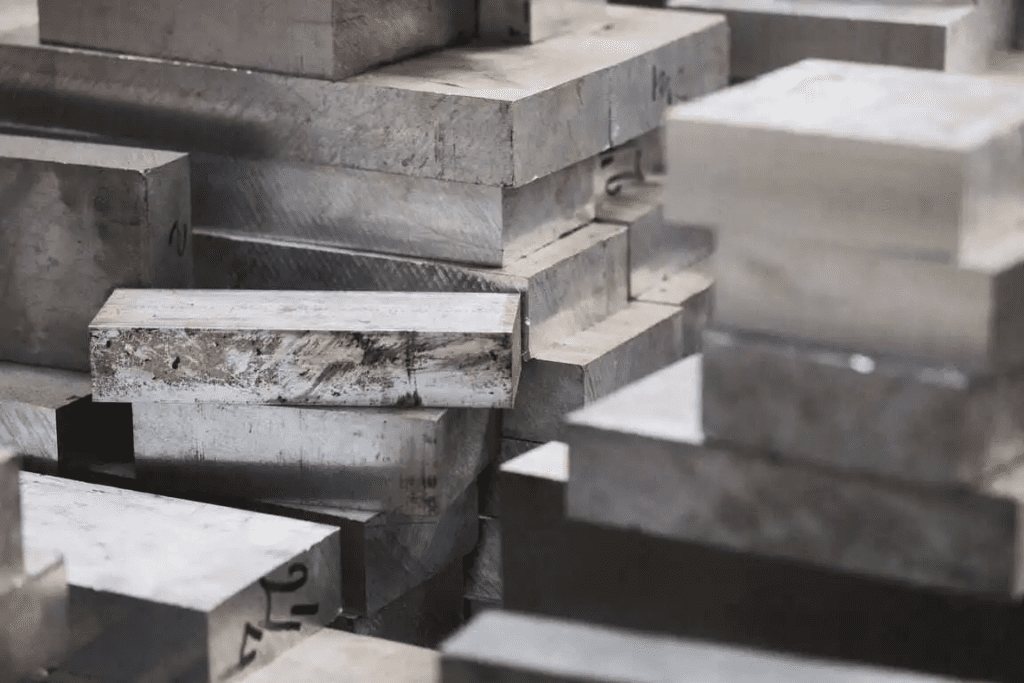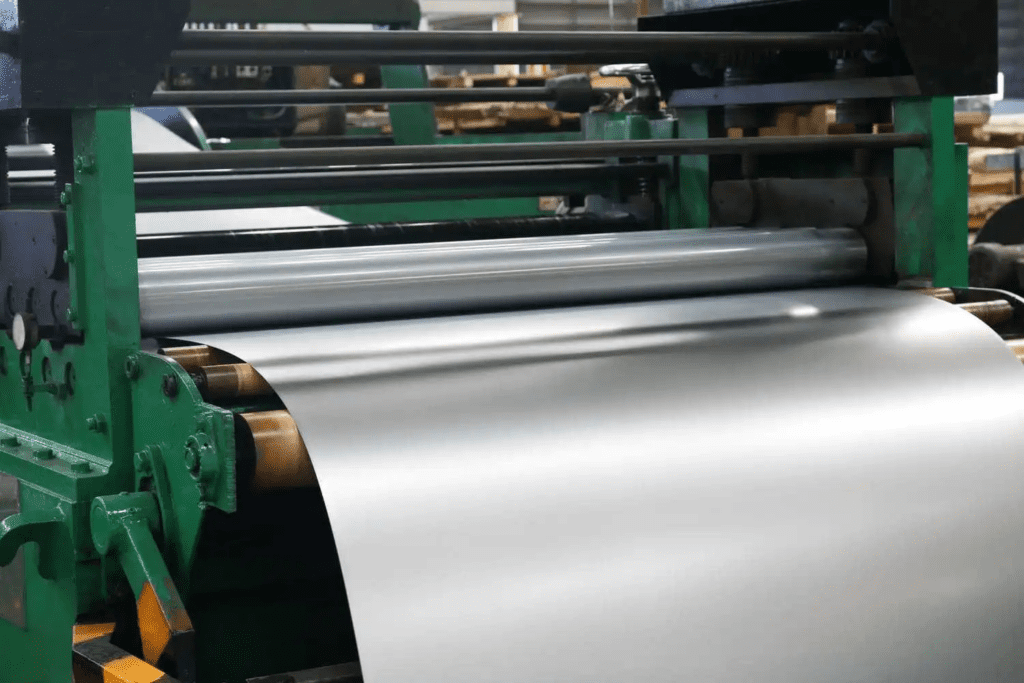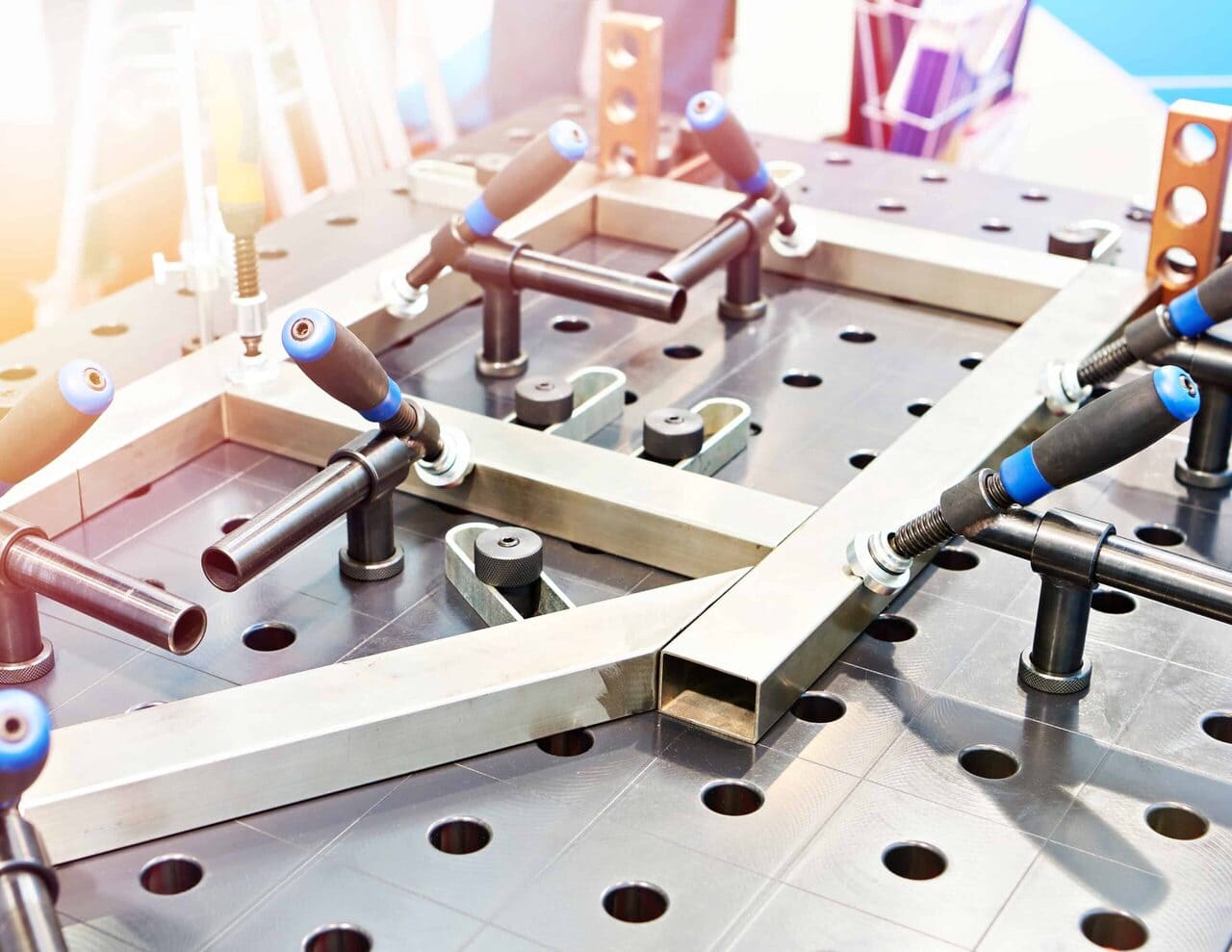Over 1.5 billion tons of steel are produced yearly to make all kinds of products, from household items to structural beams for skyscrapers. The most common type of steel is low-carbon steel, also known as mild steel. Mild steel is used in virtually every industry, particularly in the construction and automotive industries.
Because it is inexpensive, versatile, and readily available, mild steel is the most common metal used by home metalworkers, makers, and DIYers. Its uses are endless—its mechanical properties suit almost any application, and it’s more affordable than high-carbon steels, especially in the form of reusable metal remnants.
In this post, we’ll go over some mechanical and physical properties of mild steel and how to get the best prices by buying verified remnants instead of new alloy steel or other carbon steels.
What Is Mild Steel or Low Carbon Steel?

Mild steel is an industry term for low-carbon steel, which has a carbon content of approximately 0.05 to 0.3% by weight. For comparison, medium-carbon steel has a carbon content ranging from 0.3% to 0.6%, while high-carbon steel can contain up to 2.5% more carbon content by weight than low-carbon steel.
The low carbon content of mild steel gives it specific mechanical properties that make it ideal for certain types of projects. Some of the most notable properties of mild steel include:
- High ductility: Mild steel is very ductile due to its low carbon content and the absence of other alloying elements. This means that mild steel can be readily formed compared to other grades of steel without losing its toughness.
- High machinability: Mild steel is relatively soft because of its high ductility. This means that it is more easily machined than more rigid carbon steels.
- High weldability: The ductility also makes mild steel suitable for welding, both to itself and other types of steel. Low-carbon steel is easier to weld than other grades of mild steel.
- Low cost: The chemical composition and ease of manufacture make mild steel a very inexpensive material.
However, mild steel also has some disadvantages. Unlike higher carbon steels, heat treatment processes cannot significantly improve the physical properties of a mild steel grade. It’s also vulnerable to rusting when exposed to moisture, which makes it susceptible to further corrosion.
In these conditions, stainless steel, known for its superior corrosion resistance, is probably a better option but is also more expensive. Mild steel is a great choice when the application requires the tensile strength and durability of steel but not the corrosion resistance of stainless steel.
Low-carbon steel is particularly advantageous for projects where cost efficiency and ease of manufacturing are critical. Its chemical properties make it an in-demand material for various applications.
|
Top-Grade Steel for Every Purpose and Industry |
||
|
New Steel Sheet |
New Steel Plate |
All Steel Shapes |
 |
 |
 |
| Durable construction: Thick, low-carbon stainless steel offers superior strength and excellent durability for heavy-duty projects.
Weldable & adaptable: Seamlessly welded for easy fabrication in diverse applications, from appliances to large structures. Versatile applications: From food industry use to complex industrial projects, this sheet is a high performer for all applications. |
Strong & reliable: Engineered for strength, making it perfect for demanding environments like medical equipment and heavy-duty projects.
Heat resistance: Withstands high temperatures, making it suitable for both high-heat and high-stress applications. Exceptional durability: Built tough with superior resistance to corrosion, heat, and wear, ensuring long-lasting performance. |
Durability and strength: Reliable for projects needing long-lasting, tough materials.
Cost-effective: Quality steel that offers strength without breaking the bank. Custom cutting: Precise cuts tailored to exact needs with top-tier cutting tools. Versatile use: Ideal for industrial, commercial, and household applications, from construction to automotive and food processing. |
Mild Steel Uses

Mild steel is the most common type of carbon steel and can be found in many kinds of products and industries. The following are some of the uses of mild steels:
- Building frames: Mild steel beams are commonly used in construction projects for building frames because of their high tensile strength.
- Manufacturing equipment: Products made of mild steel are commonly used in industrial equipment, such as platens, welding tables, fixtures, and jigs because they are inexpensive, strong, and durable.
- Machinery parts: Mild steel makes excellent components for machine elements like gears, bearings, and springs that don’t need the corrosion resistance of stainless steel.
- Pipes: Due to its excellent weldability, this metal is used to create mild steel pipes that are strong enough to contain high-pressure fluids. Steel pipes made from mild steel are widely used in various industries.
- Cookware and cutlery: Low-carbon steel knives retain sharp edges for a long time. It can also be used to make cookware with non-stick properties that are more durable than cast iron and have a higher temperature limit than non-stick coatings.
Maximizing Value with Mild Steel Production and Fabrication

Even newly milled mild steel is affordable, but there are ways to get even lower prices. Verified mild steel remnants, often byproducts of steel fabrication processes in various industries, are available at prices much lower than steel sourced directly from a mill. Hot rolling is one process used in these steel fabrication methods, where the molten iron is shaped and solidified into usable remnants during metalworks operations.
Because mild steel is used in large quantities by manufacturers in the San Francisco Bay Area, these manufacturers have large volumes of usable material left over after manufacturing.
Local metal recyclers specializing in recycling and selling usable mild steel remnants at highly competitive prices purchase this material, including scrap steel. Additionally, scrap material can come from the initial extraction process of iron ore, where molten iron is refined and later cooled.
In addition to the cost savings, verified mild steel remnants offer the advantage of less machining waste when remnants closely match the dimensions of the component being machined or fabricated.
Remnants occupy less floor space and are easier to handle than full-size steel plates and bars. If you’re not consistently using large amounts of mild steel in your production process, remnants can be a cost-effective source of your material.
Additionally, considering scrap steel for more minor projects can lead to significant cost savings without compromising material quality. While low-carbon steels are often preferred for their ductility and ease of use, higher-carbon steels are chosen for applications requiring greater hardness and strength.
However, the affordability of mild steel remnants makes them a practical alternative to steels with higher carbon content in many scenarios.
Mild Steel in Modern Primary Steelmaking
Mild steel production typically involves two main methods: the basic oxygen furnace and the electric arc furnace. These modern primary steelmaking processes allow for precise control of mild steel grades’ chemical composition and mechanical properties.
The manufacturing processes can be tailored to produce various steel types with different carbon contents and other alloying elements. This versatility in production methods contributes to mild steel’s widespread use across multiple industries.
Surface Treatments for Mild Steel

Various surface treatments can enhance the properties of low carbon steek. One popular option is galvanized mild steel, which involves applying a zinc coating to the surface. This protective layer significantly improves the steel’s resistance to corrosion, making it suitable for use in outdoor environments and cold weather conditions.
Other surface treatment options include heat treatments and cold forming possibilities, which can alter the surface hardness and other physical properties of mild steel. These treatments expand the range of applications for mild steel products, making them even more versatile in the construction industry and other sectors.
Your Local Supplier of Mild Steel
With so many common uses of mild steel, it’s important to have a trustworthy, reliable supplier to ensure your projects are completed on time. For two decades, Industrial Metal Service has been supplying mild steel products such as remnants to manufacturers, machine shops, welders, and fabricators in the San Francisco Bay Area, with a growing number of shops nationwide.
We specialize in selling a variety of verified metal remnants, including carbon steels, aluminum, titanium, and high-temperature alloys. All our metal remnants are verified using X-ray fluorescence analyzers to ensure you receive top-quality steel for your construction projects, metal fabrication needs, or automotive industry applications.
Whether you need mild steel beams, pipes, or other products, our team can help you find the right materials for your specific requirements. We understand the importance of choosing the right steel grades for different applications, and we’re here to assist you in making informed decisions about your ferrous metal needs.
 Angle
Angle Cast Plate
Cast Plate Diamond Plate
Diamond Plate Flat Bar
Flat Bar Plate
Plate Round Bar
Round Bar Square Bar
Square Bar Square Tubing
Square Tubing Round Tubing
Round Tubing Angle
Angle Channel
Channel Diamond Plate
Diamond Plate I Beam
I Beam Round Bar
Round Bar Sheet
Sheet Square tubing
Square tubing Round Tubing
Round Tubing Rectangular Tubing
Rectangular Tubing Plate
Plate Rectangular Bar
Rectangular Bar Rectangular Tubing
Rectangular Tubing Round Bar
Round Bar Sheet
Sheet Square Bar
Square Bar Square Tubing
Square Tubing
